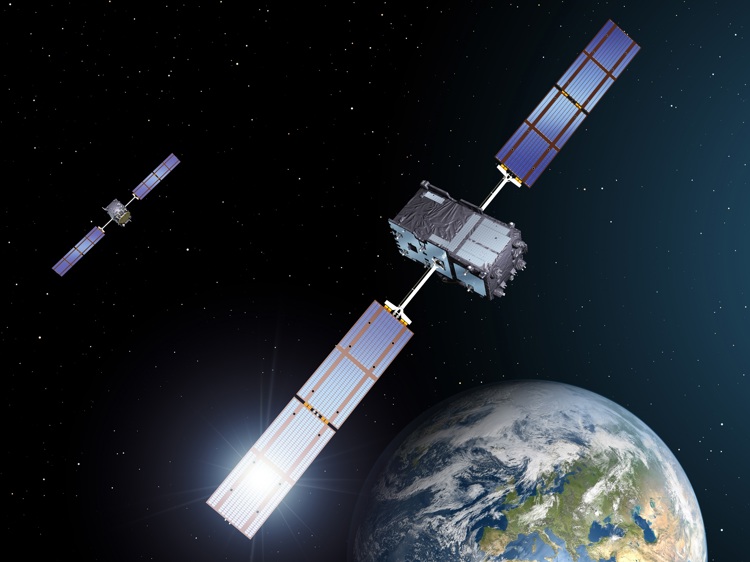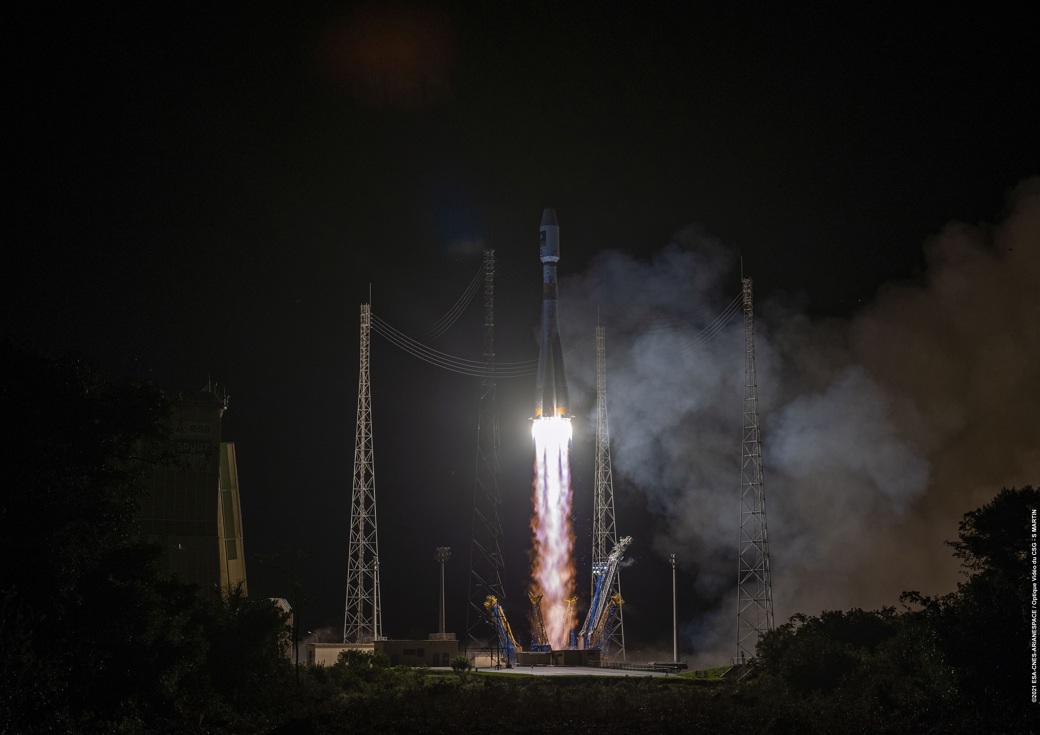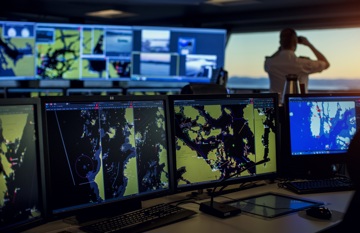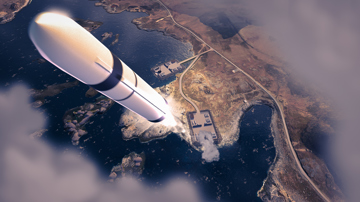All photos courtesy of the European Space Agency.
Kongsberg Defence & Aerospace (KONGSBERG) has developed and delivered both the Search and Rescue Transponder (SART) and the Frequency Generator and Upconverter unit (FGUU) for the Galileo satellites, all delivered to Surrey Satellite Technology (SSTL) in the UK.
Europe's Galileo satellite navigation system is a civil-controlled system offering guaranteed continuity of coverage, Galileo is the outcome of a partnership between the European Space Agency (ESA) and the European Commission. Satellites number 27-28 will be used to further expand the constellation up to 38 satellites.
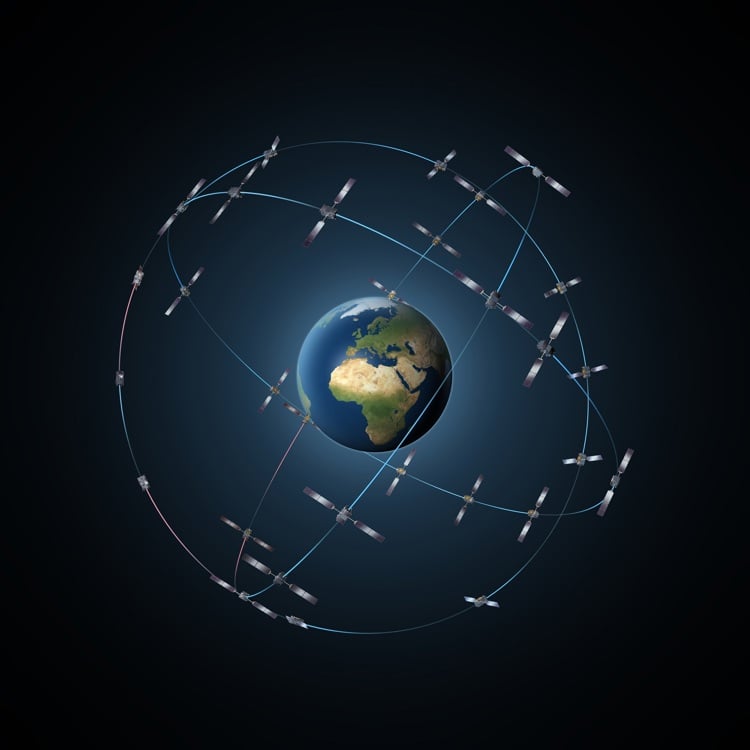
“We are very pleased and honoured being part of the Galileo mission since the start, delivering hardware for a total of 38 satellites for Galileo First Generation. Through these deliveries, we have shown that we are dedicated and are able to deliver components of pristine quality. This launch is yet another important milestone for KONGSERG’s space activity,” says Harald Aarø, Executive Vice President, Space & Surveillance, KONGSBERG.
GALILEO – EUROPE’S INDEPENDANT SATELLITE NAVIGATION SYSTEM
Galileo is Europe’s Global Navigation Satellite System (GNSS), providing improved positioning and timing information with significant positive implications for European services and users. The Galileo contracts are carried out under a programme of and funded by the European Union.
Galileo is an independent European satellite navigation system that works with the American GPS. This provides better positioning, navigation and time signals around the world, especially in areas that were previously exposed to shielding. The accuracy when using only GPS is 5-10 meters, while Galileo and GPS together give an accuracy of 1-3 meters.
More frequencies to be used for position determination will reduce the contribution from the largest source of error, which is signal delay through the ionosphere. In the northern areas, the ionosphere delay is more variable and larger, partly because satellites go lower over the horizon and the signal has a longer way to go.
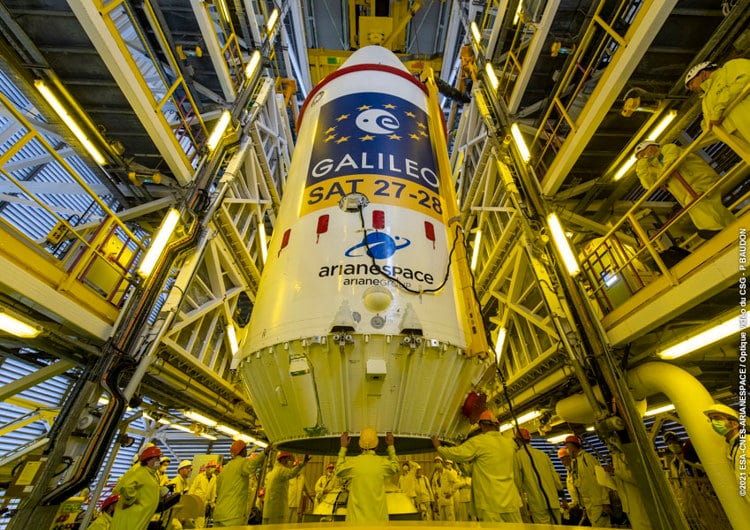
KONGSBERG TECHNOLOGY ONBOARD
KONGSBERG won the Search and Rescue Transponder (SART) contract having previously supplied similar transponders to ESA’s Meteosat Second Generation satellites. The SART’s mission is to pick up emergency distress calls from the ground or sea and relays them to the nearest rescue centre, while also sending a return-link message that help is on the way. The time to detect a person who has disappeared at sea, desert or high mountains have been shorted from three hours to just ten minutes after activating an emergency transmitter. Galileo’s global search and rescue capability marks a significant enlargement of the international Cospas–Sarsat system, which has been active for more than three decades and rescued thousands of lives.
The Frequency Generator and Upconverter unit (FGUU) is about the size of a shoe box, and of crucial importance for the Galileo satellites. The unit takes the output signals of the satellite’s Navigation Signal Generator Unit and converts them into L-band signals across Galileo’s three spectral bands. These signals are used to guide the Galileo users through their receivers, such as mobile phones, navigation units and more. The FGUU actually relies on Galileo’s atomic clocks to keep accurately locked on its set frequency.
“This has really been an industrial adventure and we are very confident to contribute to improved positioning and more precise navigation with significant positive implications for many European services and users. The support from the Norwegian Space Agency and ESA has played an important role for us to develop competitive products that are currently on board the Galileo satellites,” says Øyvind Andreassen, Director Business Development, Space & Surveillance, KONGSBERG.
